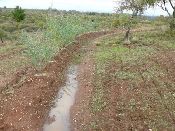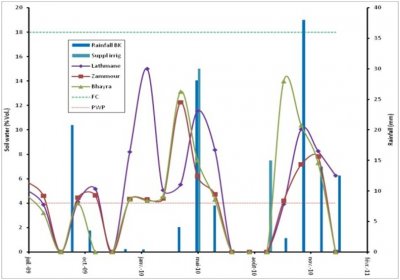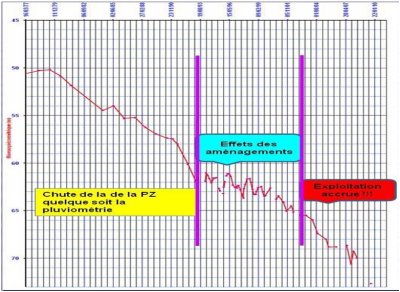|
Water harvesting: experimental results and conclusions |
 |
|
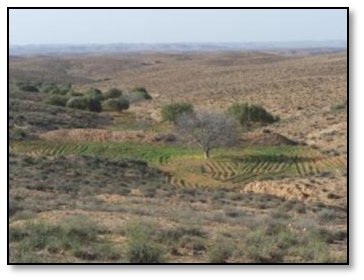 |
The Zeuss Koutine area in Tunisia suffers from over exploitation of the aquifers, and extension of orchard cultivation at the expense of natural grazing lands. Severe long drought periods reduce soil water content to levels where olive plantation can suffer enormously. Traditional water harvesting techniques (Jessour and Tabias) are used for the improvement of water content of soil. Replenishment of groundwater aquifers are ensured through the recharge structures (gabion check dams and recharge wells).
|
However, current cropping levels versus water availability may not be sustainable. The experiments are geared towards monitoring water levels, as the water harvesting techniques are well established.
Experiment: water harvesting
|
|
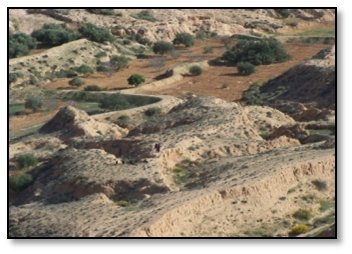
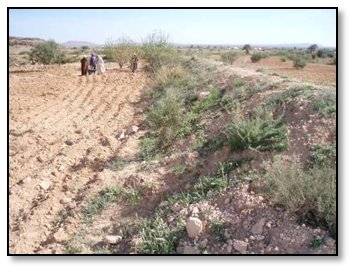
|
Jessours and Tabias are variations of a system of water harvesting whereby checkdams along flat valley floor capture the runoff water and sediments from the surrounding slopes (called impluvium). In the central flat area behind small dams dam (Tabia) fruit or olive trees are grown. Ratios of surrounding Impluvium versus cropped area vary from 6 to 20. The differences between the tabia and the jessour systems are that the former contains two additional lateral bunds (up to 30 m long) and sometimes a small flood diversion dyke (Mgoud). Besides their water harvesting qualities, these systems also have a positive effect on soil erosion and groundwater recharge.
At three sites, gravimetric methods were used to monitor soil water at different depths: 0-20 cm, 20-40 cm, 40-60 cm, 60-80 cm, and 80-100 cm. The piezometric level of aquifers and rainfall were monitored by the Water Resources Division of the Ministry of Agriculture in Medenine since the 1990. Apart from rainfall also irrigation supply was monitored.
|
The observation period lasted for one and half year which was an exceptionally dry period. No runoff was recorded from the impluvium and the only supply of water was the rainfall itself. Consequently, the soil water content was very low in the three sites especially during the summer time which did not reach the field capacity throughout the period.
The monitoring year happened to be exceptionally dry. The total recorded rainfall was 132 mm in Béni Khédache while the average annual rainfall is around 220 mm. Due to high spatial variability of rainfall and due to logistic reasons the monitoring of soil water was discontinued.
Irrigation from groundwater was supplied 2 times to prevent olive crop failure. The use of irrigation water can be seen directly in the lowering of the local aquifer system (see below). There is no reaction of the groundwater to the rainfall as this is evaporated entirely. These systems are local and react fast to pumping and are therefore vulnerable. They are replenished by wide check dams across the valleys but in the dry years of the experiment this did not occur.
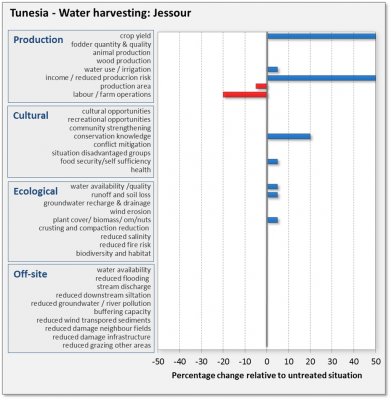 |
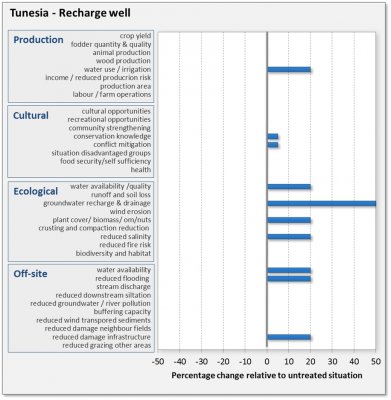 |
Evaluation of water harvesting: jessour
|
Evaluation of recharge well |
The results are evaluated from a production, socio-cultural and economic point of view. The bars express the estimated or measured percentage of change with respect to the reference situation. This change can be positive (blue) or negative (red). Note that this evaluation is based on the experiments, on the long term experience of the coordinating team in this area and on consultations with the farmers.
The stakeholders meetings show the technology as well adapted technique for the environment (90% of the land user families have applied the technology).
The evaluation shows that the Jessour/Tabia is evaluated positively and without there would be a severe risk of crop failure. This is offset by maintenance to the dyke system and some loss of production land (flat valley floor is used for checkdams). The recharge well is positively evaluated for its bio-physical effects and effect on available irrigation water, but has no direct production value. |
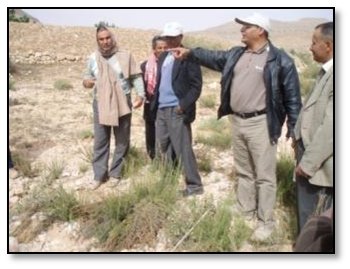 |
|
The water harvesting technique increases farmer’s income and it is very popular. The system is fragile and crop failure cannot be prevented without outside assistance in very dry years. A wider hydrological research is necessary to see how resilient the groundwater system is.
|
|
The technology is well known by the local population but training is necessary for the younger generations to make them aware of the wider setting.
|
|

